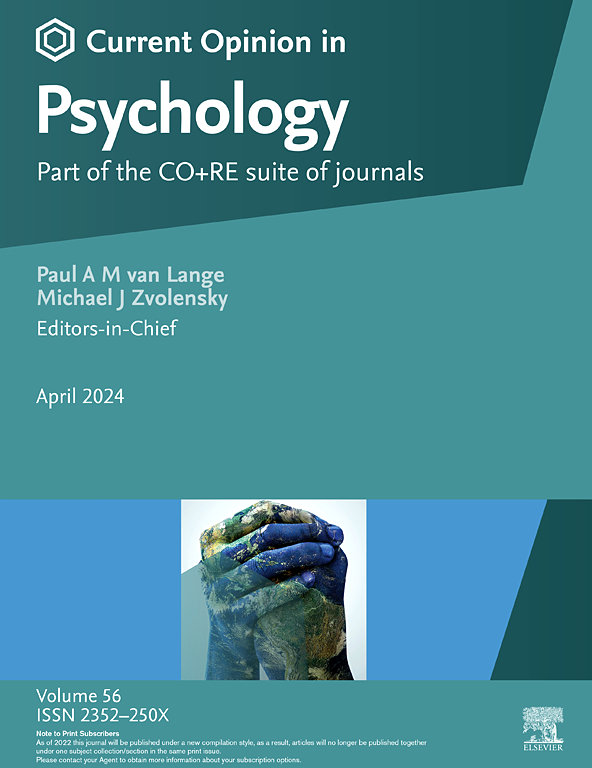重新定义道德和社会厌恶(“黑暗”)的人格特征
IF 6.9
2区 心理学
Q1 PSYCHOLOGY, MULTIDISCIPLINARY
引用次数: 0
摘要
人们提出了许多道德和社会厌恶(“黑暗”)的特征来解释相应的行为。尽管厌恶特质在预测相关结果方面很受欢迎并取得了成功,但对厌恶特质的研究受到不同标签特质之间概念重叠和相同标签特质概念异质化的困扰。这不仅意味着缺乏独特性,而且还意味着与结果的关系缺乏一致性和特异性。作为补救措施,任何厌恶特质都可以被认为是(a)所有厌恶特质共有的厌恶本质和(b)本质上非厌恶的独特部分的结合。除了解决已确定的问题之外,这种方法还提供了一些额外的好处,包括在保持或提高预测能力的同时增加了成本。本文章由计算机程序翻译,如有差异,请以英文原文为准。
Reconceptualizing ethically and socially aversive (“dark”) personality traits
Many ethically and socially aversive (“dark”) traits have been proposed to account for corresponding behaviors. Despite their popularity and success in predicting relevant outcomes, research on aversive traits is beset both by conceptual overlap between traits assigned different labels and by heterogenous conceptualizations of traits assigned the same label. This not only implies a lack of distinctiveness, but also a lack of consistency and specificity concerning relations to outcomes. As a remedy, any aversive trait can be conceived as the conjuncture of (a) the aversive essence shared across all aversive traits and (b) an essentially non-aversive unique part. Beyond tackling the identified issues, this approach avails several additional benefits, including increased parsimony while maintaining or increasing predictive power.
求助全文
通过发布文献求助,成功后即可免费获取论文全文。
去求助
来源期刊

Current Opinion in Psychology
PSYCHOLOGY, MULTIDISCIPLINARY-
CiteScore
12.10
自引率
3.40%
发文量
293
审稿时长
53 days
期刊介绍:
Current Opinion in Psychology is part of the Current Opinion and Research (CO+RE) suite of journals and is a companion to the primary research, open access journal, Current Research in Ecological and Social Psychology. CO+RE journals leverage the Current Opinion legacy of editorial excellence, high-impact, and global reach to ensure they are a widely-read resource that is integral to scientists' workflows.
Current Opinion in Psychology is divided into themed sections, some of which may be reviewed on an annual basis if appropriate. The amount of space devoted to each section is related to its importance. The topics covered will include:
* Biological psychology
* Clinical psychology
* Cognitive psychology
* Community psychology
* Comparative psychology
* Developmental psychology
* Educational psychology
* Environmental psychology
* Evolutionary psychology
* Health psychology
* Neuropsychology
* Personality psychology
* Social psychology
 求助内容:
求助内容: 应助结果提醒方式:
应助结果提醒方式:


